Can I Bring a Phone Charger on a Plane?

Whether you’re headed off on vacation or traveling for work, traveling by air can be stressful and exhausting. And you’ve probably wondered, “Can I bring a phone charger on a plane trip?” The answer is yes, but you want to check with your airline to see which options are available. Taking a cordless, portable charger may be more advantageous than hoping to have a plug in the seat in front of you.
Because the list of items that the Transportation Security Administration (TSA) or Federal Aviation Administration (FAA) has banned, many people packing for a plane trip are worried about getting pulled aside and having their packed items confiscated.
When it comes to whether or not you can bring your phone charger on a plane, there are two types of chargers to consider. The kind you plug into an electricity supply to charge a phone or a different type of device and the type that contains a battery or power back that charges the device directly. In general, passengers can pack both types in their carry on luggage without a problem, but flyers must adhere to some guidelines.
Are Plug-In Chargers Allowed?
You can take all plug-in phone chargers with you in your carry-on or checked bags with ease as they do not contain any form of battery and, therefore, do not present any danger. Typically, you will not be able to use this type of charger onboard as most airplanes do not have power sockets.
Some planes do offer USB connections between seats or on the back of the seat in front of you. In these cases, you can plug a charger directly into the USB port to boot up your phone.
Can I Bring a Phone Charger on a Plane? Power Banks
Yes, power banks are allowed on planes, but there are a few regulatory details to ensure your and the other passengers’ safety. According to the International Air Transport Association (IATA), power banks are considered spare batteries and must be individually protected from short-circuiting and carried in carry-on baggage only.
The reasoning behind only permitting power banks in carry-on luggage is because they utilize lithium cells that are more likely to combust, making them prohibited in cargo transport. In the rare instance that they catch fire, it is much easier to manage the fire in the cabin than underneath the plane.
What Kind of Power Banks are Allowed?
Not every type of power bank is allowed on a plane, according to the Civil Aviation Administration. When it comes to bringing a power bank charger on the plane, the following rules apply:
- Power banks less than 100-watt hours (Wh) can be carried onboard without approval.
- Power banks with power between 100Wh and 160Wh can be carried after the air carrier grants the passenger approval. However, each passenger is only permitted no more than 2 power banks.
- Power banks with power higher than 160Wh or power banks without an identified rated power are not allowed in the cabin area.
Power banks over 160Wh have a unique set of rules since, unlike other power banks, they are allowed in the cargo. Passengers with this type of power bank must alert the air carrier, and it will go to the plane’s cargo alongside dangerous goods.
If you pack a power bank in your checked bag, except for the 160Wh with permission, an airport security offer will most likely open your bag and confiscate the portable charger.
It is also important to note that TSA may ask you to switch your power bank on to show that it is a functioning power bank, so make sure you charge it before flying to avoid confiscation.
How to Calculate the Wattage of Your Power Bank
While most power banks are marketed by their milliampere hours (mAh), it is only useful when comparing products with the same type of battery, such as lithium. However, Watt-hours refers to the fact that the battery can supply a certain amount of watts per hour, which provides a consistent way to compare different types of batters, rather than variations of the same kind of battery.
Calculating the watt-hours of your power bank can be done with the following formula:
(mAh)/1000 x (v) = (Wh), which translates to Milliamp Hours/1000 x Nominal Voltage = Watt Hours.
What are those Measurements?
Below is a quick guide to what those measurements mean so you can calculate the watt-hours quickly.
- Milliamp Hours (mAh): how many hours the electric charge can be supplied.
- Nominal Voltage: the midpoint between fully charged and fully discharged based on a 0.2C discharge. For lithium batteries, this is typically 3.7V.
- Watt-Hours: The number of watts supplied in an hour.
Can I Bring a Phone Charger on a Plane? Use MobileQubes’s Network of Phone Charging Kiosks
If you don’t have a power bank or you don’t want to worry about the airline restrictions, use MobilQube’s secure network of phone charging kiosks.
MobileQubes offers a secure network of portable charging kiosks to take secure charging-on-the-go options off your list of things to worry about before your trip. With our Qubes, you don’t need to worry about your battery dying mid-flight or getting your power bank confiscated.
Our portable battery packs are easy, fast, and affordable. Just stop by any of the self-service kiosks in your home or destination city to rent and return a convenient, portable charger. Find a Qube today!
